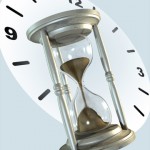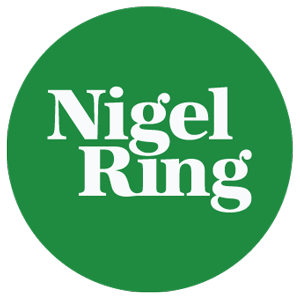 Having established the importance of different views in the time or diary section of the Organiser we will now consider the second element of the arrangement, the ‘Portable Filing System’.
Having established the importance of different views in the time or diary section of the Organiser we will now consider the second element of the arrangement, the ‘Portable Filing System’.
2. Filing System
Through the use of computers we are all familiar with folders and files. In past times we would have used a filing cabinet, but the principles are the same – drawers of folders each containing files or documents.
Divisions
Since we live life in a context of time it is helpful to consider how our storage system of information relates to the timeline of our lives. First, define the key divisions in your life. For instance, you may like to think in terms of 2 ‘drawers’ (there could be more) e.g. Home and Work. Alternatively you may think in terms of Activities and People. There is no right or wrong; it is what fits best with your lifestyle and patterns of thought that you are seeking to streamline that is important.
For illustrative purposes, let’s think in terms of Activities and People.
Folders and Files
I suggest you now create a section in your Organiser, or a Folder in your PDA, for each key Activity area. Mine would include Conferences, Nations (I visit various nations when seeking to serve churches working with the Poor), CCK (my local church is Church of Christ the King) and so on. Within each of these Folders I create sub-folders. A major conference for which I am administratively responsible is Together on a Mission (TOAM), an annual conference for over 4000 leaders and Twenties. Within this folder I would have other sub-folders – Management Team, Finance, Programme etc. Each folder will then contain files which may be pertinent to Meetings, Budget, Speakers etc. Similarly for People – I have folders for Terry Virgo, with whom I work very closely in many areas of his ministry, and my secretary, Jan (yes I still have one! – she is brilliant and saves me hours of time) to keep a note of things I want to discuss with her or delegate to her, and to monitor progress on such delegated activities etc.
Because I use a PDA, memory capacity is no serious limitation. For a paper Organiser such a structure can represent an inconvenient volume of paper and it is necessary to work with some appropriate additional storage system such as the traditional filing cabinet, and to have the discipline to archive ‘dead’ documents. Your Organiser is an extension to your memory – don’t clutter it with unnecessary material.
Relating files to time
Some files will be more time-related than others. Considering the TOAM conference, the Management Team have meetings through the year – there is an annual cycle which begins with a Debrief meeting a few days after the previous conference ends. Using files it is possible to create, for example, a ‘running agenda’ i.e. I record items that I wish to raise at the next meeting in a dated file so that when the time comes to prepare the meeting agenda much of the work is already done. So this file is time related. Similarly, for Terry. Because he travels a great deal I collect an ‘agenda’ of items to discuss with him when we next have an opportunity to meet up – whether formally to handle administration or informally on a car journey. (In the latter case I will brief myself before we start and weave topics I need to discuss into the conversation at appropriate points on the journey to make the journey less ‘administrative’!).
This is not rocket science. But setting up a carefully thought-through filing structure at the start will save you immense amounts of time and frustration.
3. Personal Information and Data
The 3rd division in your Organiser is for Information and Data. Most important is your Contacts list with addresses, phone numbers, email addresses etc. Because this is related to people I tend to add information into this section such as birthdays, the contact details for the closest Flower Shop for those I may occasionally send flowers to to say ‘thank you’, and so on. It thus becomes more than just a mailing list.
Other information could include Maps, World time zones etc, depending on your particular interests.
You now have my recommended structure for your Organiser or PDA. There is, of course, some fine detail that you will want to personalise, but the important message is to apply logic to the system that relates all items together in a way that you will be readily accessible.
Next time we will return to monitoring progress with your Do it list.
